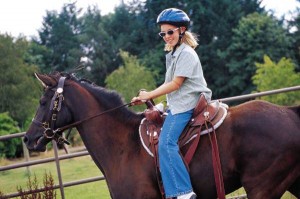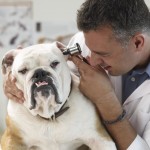Spring Horse Care
Spring is almost here! The snow is starting to melt, the days are getting longer and warmer, and we all know what that means – soon you’ll be ready to take your horse out and head off to trail ride or start up the show season again! Now is the best time to prepare your horse for spring by checking his overall health, clean and repair the tack and get your horse back in good physical condition for riding. So here are a few spring horse care tips:
Body Condition
Most likely your horse has grown a long thick coat which, while it helped keep him warm during the winter, it also can hide a lot of underlying issues such as weight loss (or weight gain) or skin problems. Check your horse’s body condition by feeling along his neck, withers, shoulders, rib cage and back. If you can feel individual ribs more easily now, you should begin adjusting his feeding program in order to improve his weight condition. You can also check for skin problems including scratches, cuts, scabs or other skin problems. If you live in a rainy or humid area, check to see if you feel bumps along your horse’s back or notice spots of missing hair – this could be rain rot which can be treated with over the counter remedies.
Shedding
Now that it’s almost spring horse care also includes helping your horse lose his winter coat. There are many grooming products available that help with shedding, including shedding blades, curry combs, and brushes. One effective method is to use a curry comb to loosen the dead hair and then use a brush to remove the loose hair, though a lot depends on your horse’s attitude towards grooming as well as your own personal preference.
Vaccinations
Spring horse care should also include vaccinating your horse, so talk to your vet to see what vaccinations he recommends in your area. It’s best to have your horse vaccinated before mosquito season starts, since many equine diseases are transmitted by mosquitoes including Eastern, Western, and Venezuelan encephalomyelitis, as well as West Nile virus. If your horse lives with you and never leaves the property (and other horses do not come in), then most likely you will just need the basic flu shots along with West Nile vaccine. A good resource to learn about the vaccination guidelines is listed on the American Association of Equine Practitioners (AAEP) website. Another good place to keep track of recent outbreaks is the Center for Disease Control (CDC) website. While it’s good to do your research, ultimately your vet is the best source to tell you what vaccines and booster shots (if any) your horse needs.
Tack
Spring horse care also means this is your chance to send out all your winter blankets for cleaning and repairs! Most blanket repair shops not only clean and repair, but they will pack them neatly in storage bags so you can have clean blankets for use next winter.
Pull out all of your tack and check your leather for wear and damage. There are many products available you can use to clean and condition your tack to avoid drying and cracking during the riding season. This is also a perfect opportunity to reorganize your tack room and update your first aid kit as needed. Clean and disinfect your brushes and towels, and organize combs, brushes and other grooming supplies. Check your supplements and see what you’re low on. With show season starting up, spring horse care should include stocking up on your favorite products such as InflamAway HA-200 equine joint supplement and Hoof ReNu hoof supplement.
Getting Back in Shape
Most likely you and your horse have been riding less frequently during the winter, so it’s a good idea to take it slowly as you return back to riding. You’ll need to adjust your riding schedule to bring him back into good working condition. It’s best to starting with short easy rides with plenty of warm up and cool down time, and gradually increase your riding into longer rides and exercises that are specific to your riding discipline. Remember, getting your horse back into condition involves not just his muscles, but also his tendons, ligaments, heart and lungs. If your horse still has a thick winter coat, you’ll need to take extra time and precautions in riding as he can overheat easily; also, you will need to spend more time cooling him down after your ride to make sure he’s completely dry. By returning to your riding schedule slowly, you’ll reduce the chance of injury and will be able to enjoy your riding time together as we head into the warmer months. You can learn more about getting your horse back into shape here.







Leave a Reply